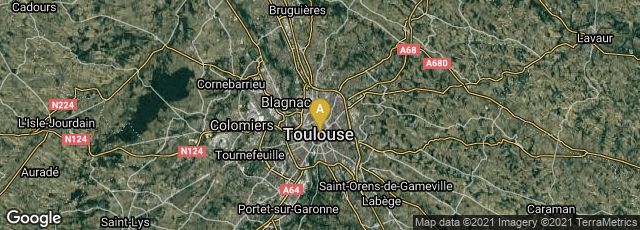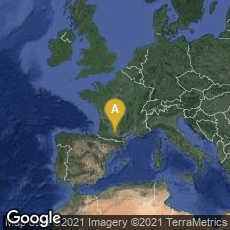

A: Toulouse, Occitanie, France
In 1779 French painter Jacques Gamelin issued from Toulouse Nouveau recueil d'ostéologie et de myologie, dessin‚ d'après nature. . . pour l'utilit‚ des sciences et des arts. The folio volume, made up of 128 unfolded single sheets, included 90 engraved plates, and text vignettes engraved in a variety of techniques by Gamelin and his pupils Lavallée and Martin after Gamelin's original drawings.
Gamelin is known for his paintings and engravings of battle scenes. The plates for his anatomical atlas, issued in an edition of only 200 copies, were prepared from drawings made at his own dissection facility; they are distinct from the plates of other works of its type, being larger, more artistically varied, and more expressive and fantastic in their conceptions. "The work is known for its display of both talent and imagination, with striking scenes of the Resurrection, the Crucifixion, and skeletons at play. Aside from the full-page copperplate illustrations by Gamelin and the engraver Lavalée, the work contains a number of intriguing vignettes on the title pages and elsewhere, which show battle scenes, visitations by death on unsuspecting revelers, and the anatomical artist's studio" (Wikipedia article on Jacques Gamelin, accessed 02-08-2009).
Gamelin's plates show a constant interplay between the artistic and the anatomic: emblematic images in the seventeenth-century tradition, vignettes in the coquettish eighteenth-century manner, and classic studies of figures in repose and movement vie with straightforward "medical" depictions of bones and muscles. Gamelin's technical perfection, coupled with the emotional and fantastical elements in his images, have led him to be seen as a precursor of Goya; it is possible that the young Goya may have known or studied with Gamelin, who taught in Rome during the time Goya was there.
Hook & Norman, The Haskell F. Norman Library of Science and Medicine (1991) no. 872.